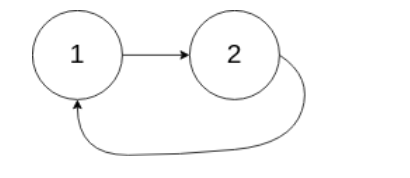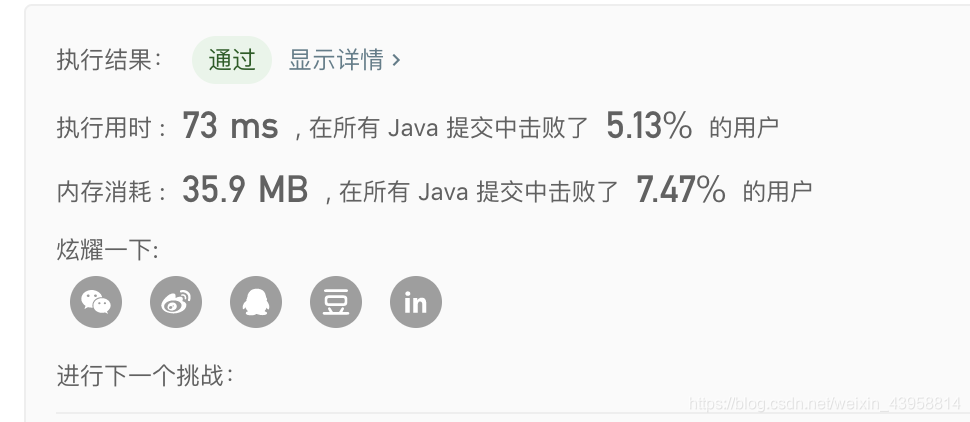给定一个链表,返回链表开始入环的第一个节点。 如果链表无环,则返回 null。
为了表示给定链表中的环,我们使用整数 pos 来表示链表尾连接到链表中的位置(索引从 0 开始)。 如果 pos 是 -1,则在该链表中没有环。
说明:不允许修改给定的链表。
示例 1:
输入:head = [3,2,0,-4], pos = 1
输出:tail connects to node index 1
解释:链表中有一个环,其尾部连接到第二个节点。

示例 2:
输入:head = [1,2], pos = 0
输出:tail connects to node index 0
解释:链表中有一个环,其尾部连接到第一个节点。

示例 3:
输入:head = [1], pos = -1
输出:no cycle
解释:链表中没有环。

开始想通过题意就是ListNode类型也就是返回开始入环的那个点
开始通过事例以为返回是那个结点的存放位置地址值
后面看到返回类型,故可以设计个集合一个个存进去,判断前面是否包含后面的值,如果包含代表有环
其实代码编写与题意还是有点差别
**
* Definition for singly-linked list.
* class ListNode {
* int val;
* ListNode next;
* ListNode(int x) {
* val = x;
* next = null;
* }
* }
*/
public class Solution {
public ListNode detectCycle(ListNode head) {
if(head == null) {
return null;
}
ListNode temp = head;
List<ListNode> list = new ArrayList<>(0);\
//下面不能是temp.next因为没有头结点
while (temp != null) {
if (list.contains(temp)) {
return temp;
}
list.add(temp);
temp = temp.next;
}
return null;
}
}

我这种方法第一次时间复杂度太高了,还有很大的改进,大牛的很多想法,我是无法想明白。








 博客围绕链表展开,探讨返回链表开始入环的第一个节点的问题。若链表无环则返回 null,给出多个示例说明。作者起初对返回值理解有误,后设计用集合存储节点判断是否有环,但该方法时间复杂度高,还有改进空间。
博客围绕链表展开,探讨返回链表开始入环的第一个节点的问题。若链表无环则返回 null,给出多个示例说明。作者起初对返回值理解有误,后设计用集合存储节点判断是否有环,但该方法时间复杂度高,还有改进空间。
















 363
363

 被折叠的 条评论
为什么被折叠?
被折叠的 条评论
为什么被折叠?








